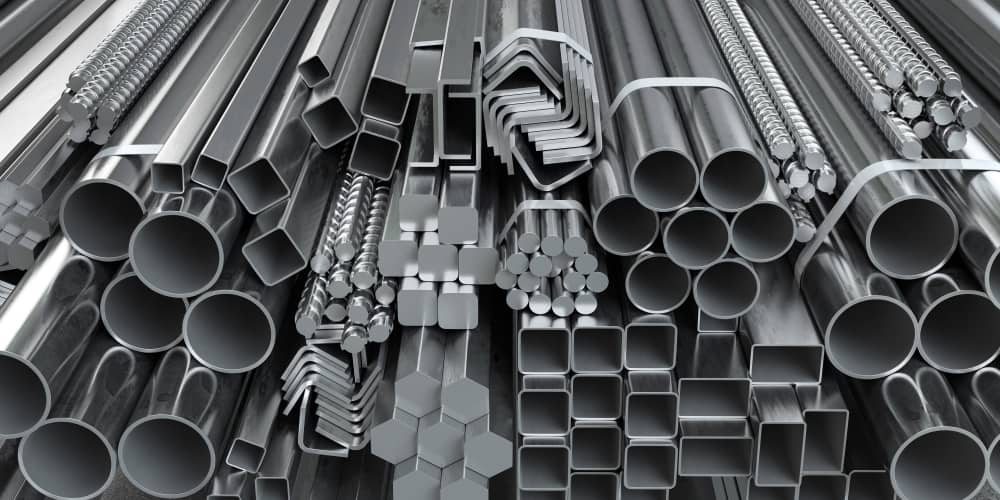
When choosing materials, industries look for metals that will maximize the benefits of their investment. Stainless steel is a popular and cost-efficient solution for operations that require characteristics like corrosion and temperature resistance in addition to strength and durability. However, the exact attributes that stainless steel provides will vary depending on the type of stainless steel.
Ferritic and austenitic stainless steel are commonly used by manufacturers and fabrication companies. Due to their varying microstructures, though, these types of stainless steel may respond differently to similar welding procedures. Understanding the differences between ferritic vs. austenitic stainless steel is essential to ensure the highest quality welds.
Ferritic vs. Austenitic Stainless Steel Properties
Ferritic stainless steel is similar to carbon steel in terms of metallurgical properties and microstructure. However, it generally displays higher chromium content (up to 30 percent), which provides strong corrosion resistance to ferritic stainless steel. And while ferritic accounts for almost 25 percent of global stainless steel usage, it does present disadvantages. For instance, ferritic’s low carbon content can reduce its strength and toughness. Additionally, exposure to very high temperatures can result in a loss of ductility and formability. This can pose challenges when welding and increase the susceptibility to hot cracking and embrittlement.
Austenitic stainless steel, on the other hand, is the most common type of stainless steel. It is employed across a wide range of industries, including aerospace, medical, and automotive. This type of stainless steel is not hardenable by heat treatment. Cold working, however, can increase its strength. This feature makes the welding of austenitic stainless steel the most effective among all stainless steel types.
Considerations When Welding Ferritic vs. Austenitic Stainless Steel
Differing mechanical properties and reactions to heat treatment can make welding ferritic vs. austenitic stainless steel a challenging choice. For manufacturers to leverage the full potential of these metals, a reliable weld assessment is necessary.
Welding Ferritic Stainless Steel
Most arc welding processes are suitable to weld ferritic stainless steel; however, it is advisable to lower the heat input and keep the thickness to a minimum—preferably less than 6mm.Heat control reduces the chance of grain growth, and thin sections minimize the overall impact of a loss of toughness in the material. Additionally, low-carbon austenitic steel can be used as a filler material to minimize the loss of ductility.
Overall, the weldability of ferritic stainless steel is poorer than that of austenitic stainless steel. Although not hardenable by heat treatment, ferritic stainless steel can be prone to hot cracking or embrittlement if exposed to high temperatures. Ferrite grain growth can also present an issue in the heat-affected zone, which can reduce ductility and increase susceptibility to intercrystalline corrosion.
Welding Austenitic Stainless Steel
Austenitic stainless steel offers easy weldability; however, it is susceptible to hot cracking, pitting corrosion, weld distortion, and loss of corrosion resistance. The metal’s low thermal conductivity makes low weld heat input a requirement. While manufacturers can choose among various processes for welding austenitic stainless steel, they will need to analyze the filler material for compatibility. Filler rods with lower carbon content and strength properties greater than the austenitic steel alloy are preferable. For instance, a type 304 can use type 308 as the filler material. It is also important to note that the filler material should be compatible with the weld design and parameters. And to ensure that corrosion resistance is not affected during the welding, operators should back purge with an inert gas like argon.
Understanding Ferritic and Austenitic Stainless Steel for Enhanced Weld Results
Welding applications for ferritic vs. austenitic stainless steel can differ significantly. For the best results, manufacturers should possess a thorough understanding of weld parameters and filler materials to ensure reliable, high-quality welds for these tasks. Properly identifying the differences between ferritic vs austenitic stainless steel will ensure manufacturers optimize material weldability for their application while enhancing safety and component strength.
Arc Machines, Inc. provides a range of welding technologies that supports efficient fusion for different types of stainless steels. For product inquiries and to discuss any further questions concerning ferritic vs austenitic stainless steel, contact sales@arcmachines.com. To develop a custom solution, contact us to arrange a meeting.




